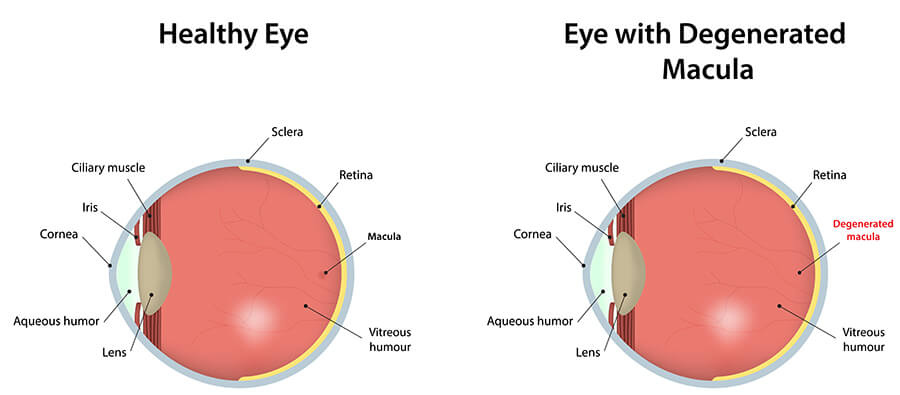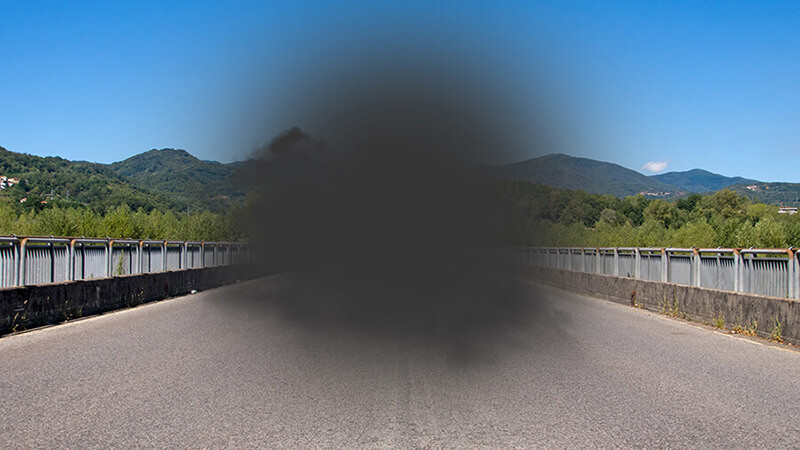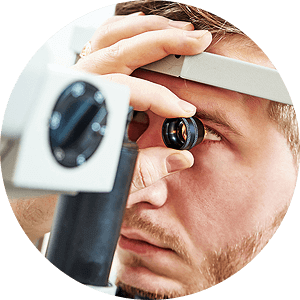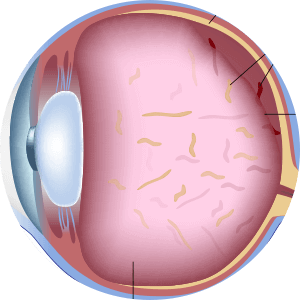Macular Degeneration Treatment in Manhattan
Age-related macular degeneration (AMD) is a disease in which the macula, the part of the retina responsible for central vision, starts to degenerate. AMD is the leading cause of vision loss and blindness in America, among those who are over the age of 65.
Because AMD affects the macula, the sufferer will begin to lose their sharp, central vision over time, leaving a dark spot in the center of the visual field. AMD does not cause complete blindness but can cause enough damage to leave patients unable to complete daily activities without assistance. If you experience any of these symptoms be sure to schedule a consultation with the retina specialists at Angioletti Retina offices in Manhattan today.

There are two different types of Age-related macular degeneration – dry AMD and wet AMD.
What is Dry AMD?
Dry AMD is much more common, and there is no treatment known. It is the early stage of the disease, and although there are no proven treatments, there are measures that doctors believe may slow the progression of AMD. Patients with dry AMD may notice a slow loss of central vision, but the symptoms are not as severe as with wet AMD. However, dry AMD can slowly progress into late stage geographic atrophy, a disease that can also cause severe vision loss.
What is Wet AMD?
About 10 percent of AMD cases will progress into a more advanced and damaging form of the disease, called wet AMD. With wet macular degeneration, new blood vessels grow beneath the retina and leak blood and fluid. This leakage causes permanent damage to the retina, causing the it’s light-sensitive cells to die off and leave blind spots in central vision.
Vision loss from AMD is permanent as there is no known way to reverse it. Medications such as Lucentis have been shown to slow the progression of AMD, and devices such as the imtable microscope have been shown to improve remaining vision.
What are the Symptoms of AMD?
Neither wet nor dry AMD are associated with any eye pain. The earliest symptom or dry AMD is blurred vision. As more cells die off, vision begins to get blurrier. This blurred vision may go away in brighter light settings. Patients will notice that they see less detail and may eventually develop a small gray or black blind spot in the middle of their vision.

What it’s like to see with macular degeneration.
With wet AMD, of the symptoms above may be noticed. In addition, wet AMD may cause straight lines to appear crooked or wavy. This distortion is caused by the fluid that leaks from the blood vessels. Central vision may decrease in a short period of time.
Eye Exam and Consultation
It is very important for anyone experiencing these symptoms to notify their eye doctor immediately. If you are overdue for your next eye exam or if you have any other questions about AMD or its treatment, contact us today. We will properly inform you on issues such as macular holes, macular pucker, and hereditary eye issues, call and make an appointment with our retina specialists at Angioletti Retina in Manhattan for a consultation.



